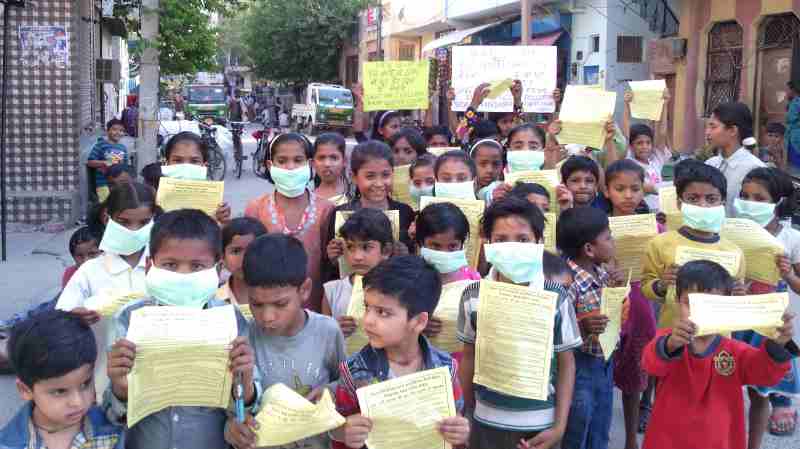Climate Change: How to Meet Paris Agreement Goals

Governments and non-state actors need to deliver an urgent increase in ambition to ensure the Paris Agreement goals can still be met, according to a new UN assessment.
The eighth edition of UN Environment’s Emissions Gap report, released ahead of the UN Climate Change Conference in Bonn, finds that national pledges only bring a third of the reduction in emissions required by 2030 to meet climate targets, with private sector and sub-national action not increasing at a rate that would help close this worrying gap.
The Paris Agreement looks to limit global warming to under 2oC, with a more ambitious goal of 1.5oC also on the table. Meeting these targets would reduce the likelihood of severe climate impacts that could damage human health, livelihoods and economies across the globe.
[ Poisonous Particles + Noise Nuisance = Death for Delhi ] – Research Report
As things stand, even full implementation of current unconditional and conditional Nationally Determined Contributions makes a temperature increase of at least 3oC by 2100 very likely – meaning that governments need to deliver much stronger pledges when they are revised in 2020.
Should the United States follow through with its stated intention to leave the Paris Agreement in 2020, the picture could become even bleaker.
The report does, however, lay out practical ways to slash emissions through rapidly expanding mitigation action based on existing options in the agriculture, buildings, energy, forestry, industry and transport sectors.
[ Join the Green Group of Dwarka ]
Strong action on other climate forcers – such as hydrofluorocarbons, through the Kigali Amendment to the Montreal Protocol, and other short-lived climate pollutants such as black carbon – could also make a real contribution.
“One year after the Paris Agreement entered into force, we still find ourselves in a situation where we are not doing nearly enough to save hundreds of millions of people from a miserable future,” said Erik Solheim, head of UN Environment.
“This is unacceptable. If we invest in the right technologies, ensuring that the private sector is involved, we can still meet the promise we made to our children to protect their future. But we have to get on the case now.”
[ DDA Corruption Increasing in Delhi Housing Societies ]
CO2 emissions have remained stable since 2014, driven in part by renewable energy, notably in China and India. This has raised hopes that emissions have peaked, as they must by 2020 to remain on a successful climate trajectory.
However, the report warns that other greenhouse gases, such as methane, are still rising, and a global economic growth spurt could easily put CO2 emissions back on an upward trajectory.
The report finds that current Paris pledges make 2030 emissions likely to reach 11 to 13.5 gigatonnes of carbon dioxide equivalent (GtCO2e) above the level needed to stay on the least-cost path to meeting the 2oC target. One gigatonne is roughly equivalent to one year of transport emissions in the European Union (including aviation).
The emissions gap in the case of the 1.5oC target is 16 to 19 GtCO2e, higher than previous estimates as new studies have become available.
“The Paris Agreement boosted climate action, but momentum is clearly faltering,” said Dr. Edgar E. Gutiérrez-Espeleta, Minister of Environment and Energy of Costa Rica, and President of the 2017 UN Environment Assembly. “We face a stark choice: up our ambition, or suffer the consequences.”

![Children demonstrating in the streets of New Delhi so that the Indian government should protect them from dust pollution, noise pollution, and air pollution of extended FAR construction activity in occupied housing societies. Photo and Campaign by Rakesh Raman [ Click the photo to know the details. ]](https://www.ramanmedianetwork.com/wp-content/uploads/2017/04/dwkpol1-800x445.jpg)



